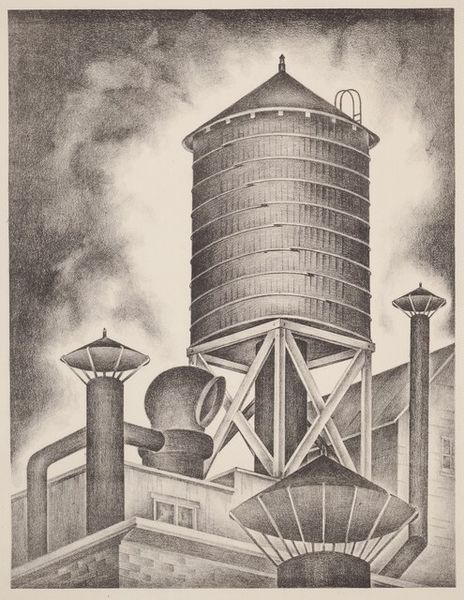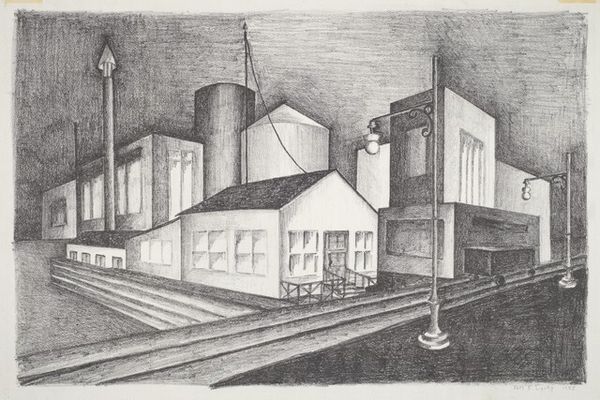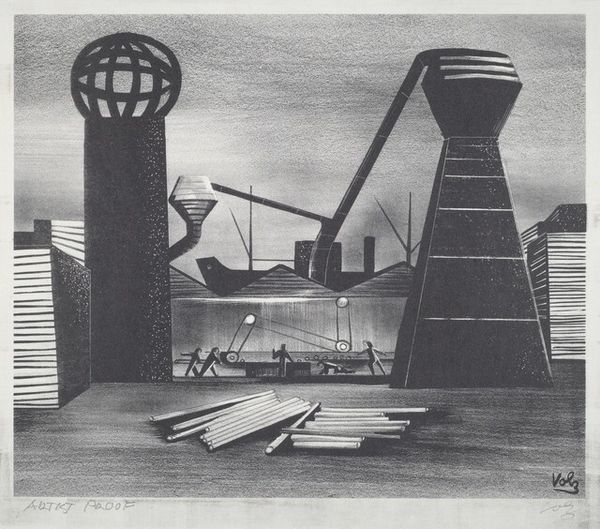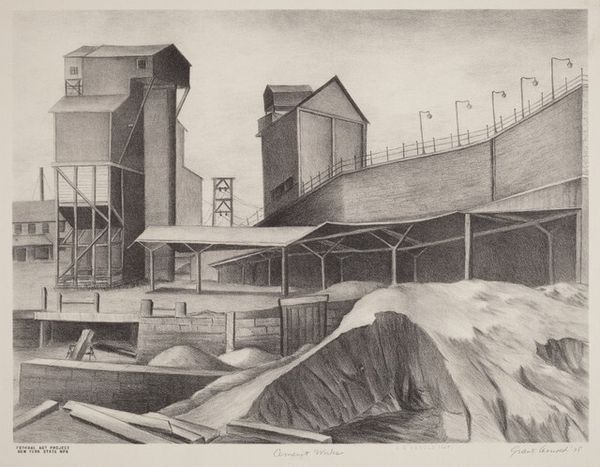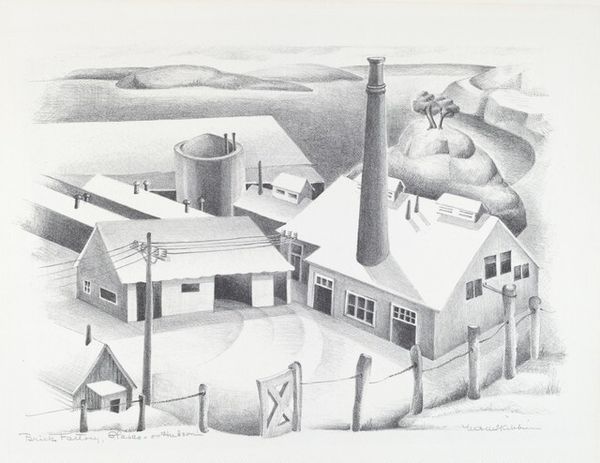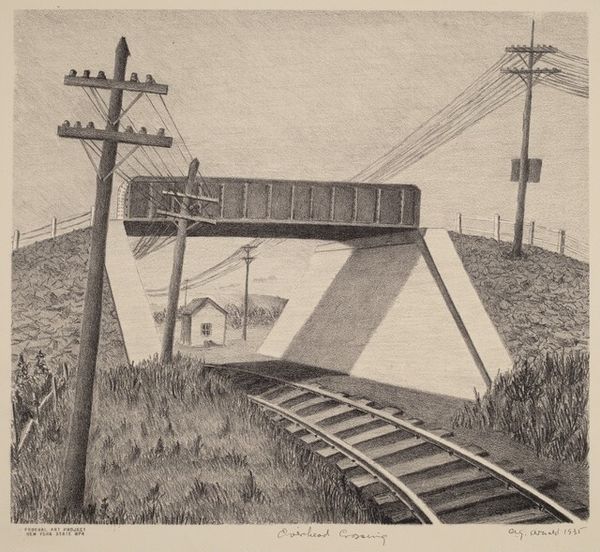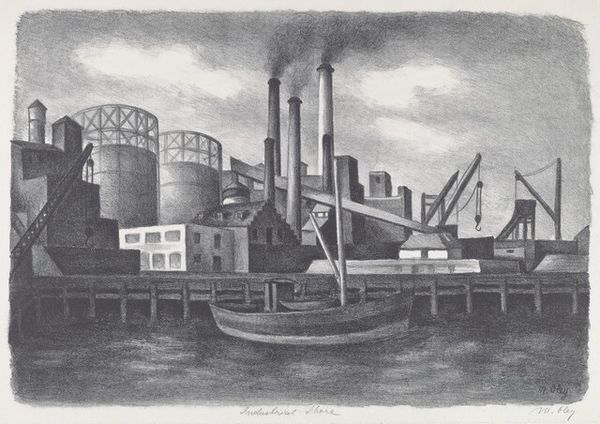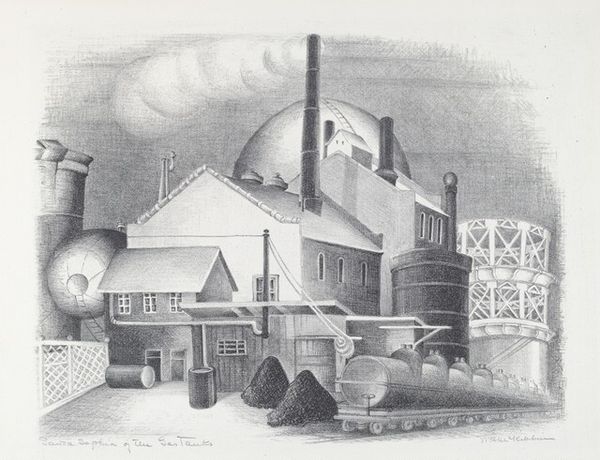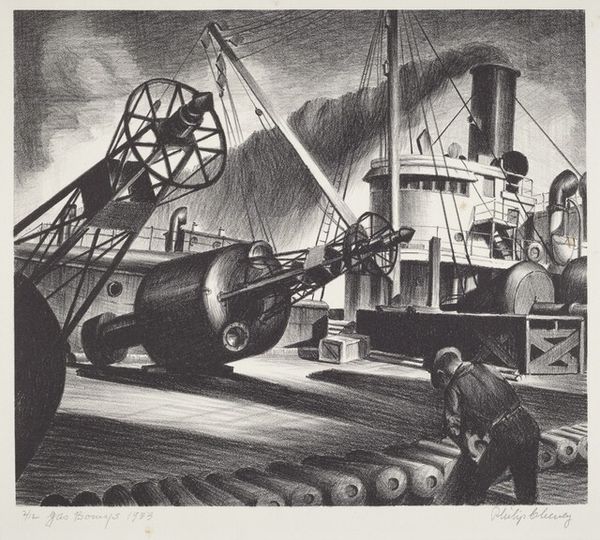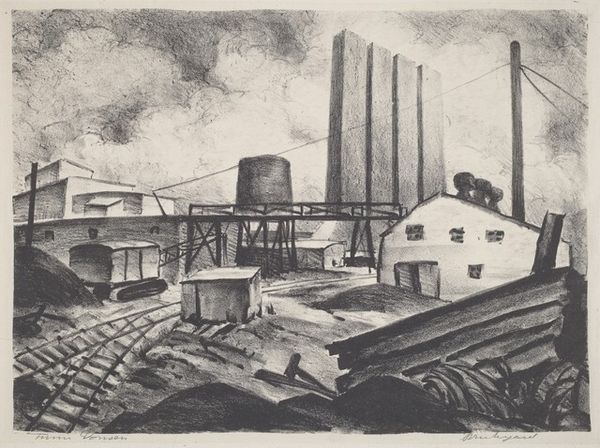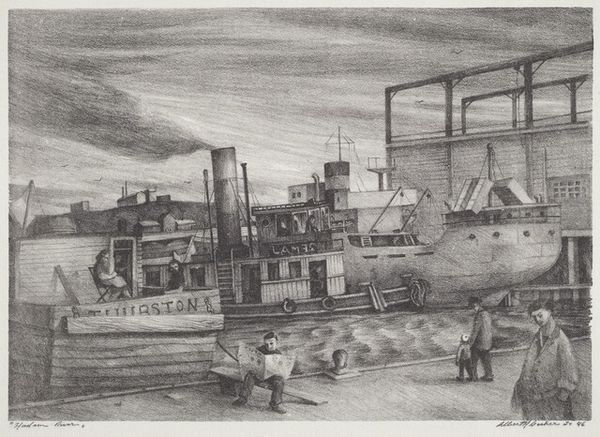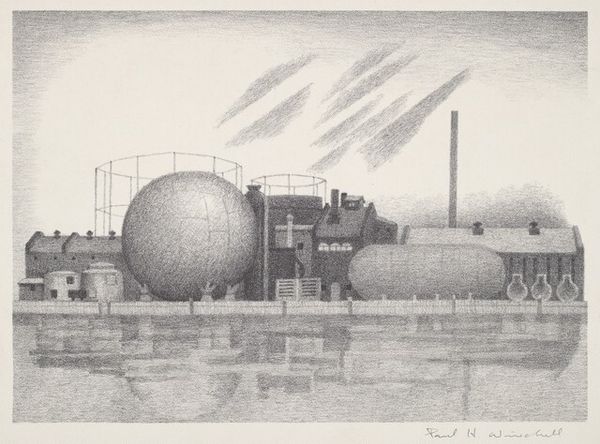
drawing, print, pencil, graphite
#
pencil drawn
#
drawing
# print
#
landscape
#
pencil drawing
#
pencil
#
graphite
#
cityscape
#
graphite
#
regionalism
#
realism
Dimensions: Image: 315 x 415 mm Sheet: 401 x 575 mm
Copyright: National Gallery of Art: CC0 1.0
Editor: Here we have Albert William Heckman's "Bridge at Poughkeepsie" from 1934, made with graphite on paper. It’s striking how the artist emphasizes industrial elements, yet renders the scene in a soft, almost melancholic tone. What compositional strategies do you observe in this work? Curator: Observe the careful arrangement of lines, the interplay of geometric forms, and the distribution of tonal values. The bridge itself, a man-made structure, is rendered with precise, sharp lines, contrasting against the softer, organic shapes of the landscape. The cylinders introduce a crucial element of formalism, echoing each other while leading the eye back across the picture plane. Notice how Heckman has organized the visual elements into a set of interlocking geometric relationships. Editor: I see that now. The cylindrical forms are quite prominent and repeat the linear structure of the bridge supports. It seems to create a rhythmic visual structure. But why? Curator: Indeed. And consider the surface modulation of each shape, the planes creating shifting light and shadow. Heckman has chosen graphite’s limited tonal scale to emphasize pattern, weight, and clarity, thus calling attention to form. Editor: So it’s about observing the intrinsic visual language more than documenting a place or time? Curator: Precisely. The "Bridge at Poughkeepsie" offers a masterclass in compositional balance through line, form, and tone, reminding us that true art often resides not in the subject matter itself, but the artist’s manipulation and structuring of visual elements. Editor: This formalist lens truly reshapes how I understand the artwork, shifting the focus from the bridge's significance to the elegance of its structural design.
Comments
No comments
Be the first to comment and join the conversation on the ultimate creative platform.

